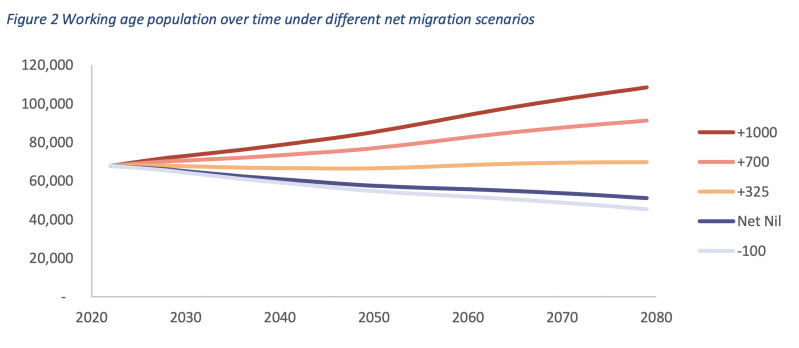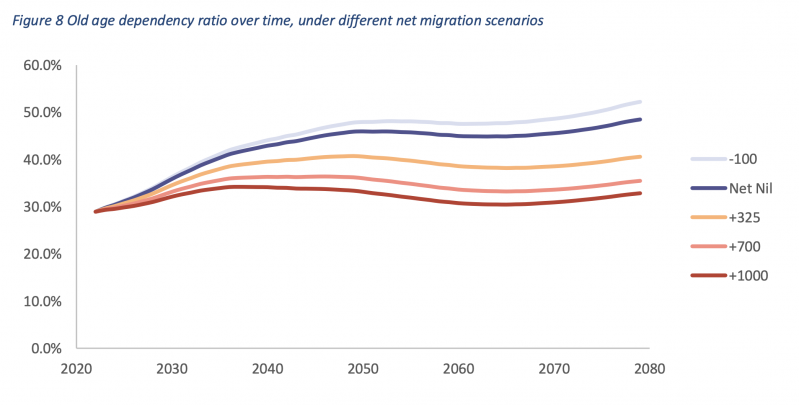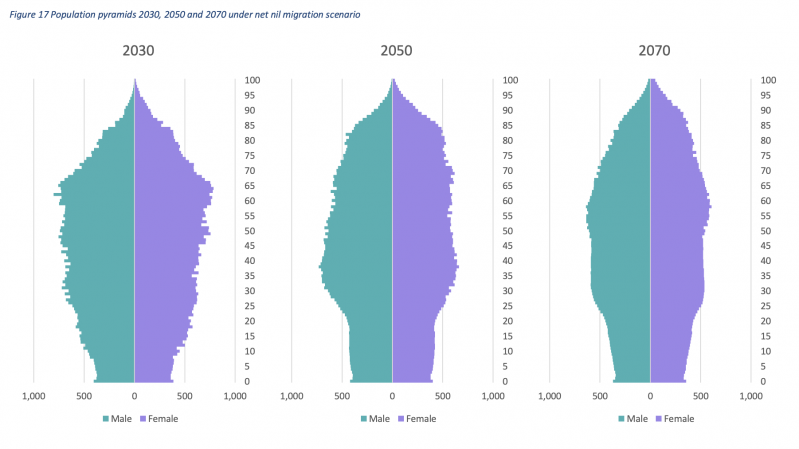


Jersey needs inward migration to maintain its working age population, as the number of elderly islanders is expected to increase by around 50% over the next 20 to 30 years, according to a new report.
The figures were published today in Statistics Jersey's latest population projections for the period 2023 to 2080.
The report, which provides data on the projected future size and structure of the island's population that would arise under particular scenarios of births, deaths and migration patterns, appears to confirm longstanding concerns about how Jersey will care for its older population in future without a large enough working population.
A report published in October by PwC concluded that there may be a case for lifting the effective age of retirement in the island to help retain key talent and ease the pressure on public finances.
There have also been fears over the so-called 'Bean Drain' of locally qualified talent, while the hospitality sector has warned of a potential "mass exodus" of nearly 2,000 staff if urgent action isn't taken to change work permit policies.
The latest figures from Statistics Jersey will inform Government as it seeks to create a population policy to remedy the struggles that the island is facing.
Express pulled out the key findings...
The projections are presented based on five different scenarios happening each year until 2080.
These are:

Pictured: Working age population over time under different net migration scenarios. (Statistics Jersey)
The report found that if the population of Jersey remains the same over the next 20 years, there will be a decline of over 10% in the working age population by 2040.
In order to maintain the working age population at its current size, Jersey needs net migration of approximately +325 people each year.
Both the +700 and +1,000 net migration scenarios result in an increase in the working age population.
Even if the overall population remains the same or decreases, the population of those aged 75 or above and those aged 85 or above is projected to increase by almost 50% in the next 20 years in all five scenarios.
Under the lower net migration scenarios (+325, net nil and -100), the rise in the older age population eventually stabilises or starts to reduce.
However, under the higher net migration scenarios (+700 and +1,000), the size of the older age population continues to increase as the larger number of new arrivals begin to age.
In all scenarios, the number of children (aged under 16) is projected to reduce over the next 10-20 years.
Under the lower net migration scenarios (+325, net nil and -100), the younger age population is projected to stabilise or slightly decline over the long-term, remaining at a level below what it is currently.
Under the higher net migration scenarios (+700 and +1,000), the younger age population is projected to increase in size above what it is currently – but not until around 2050.

Pictured: Jersey's old age dependency ratio over time, under different net migration scenarios.
The dependency ratio is the ratio of non-working age to working age people in the population.
The old age dependency ratio is the ratio of those aged above working age to those of working age in the population.
A higher dependency ratio means that a larger proportion of the population is not part of the potential labour force, which can place additional burden on healthcare, social security and educational systems.

Pictured: Population pyramids for 2030, 2050 and 2070 if the number of people arriving in Jersey equals the number of people leaving each year.
In all five population scenarios, the old age dependency ratio in Jersey is projected to increase in the next 10 to 20 years.
However, higher levels of migration result in a lower dependency ratio over the period of the projections.
Under the lower net migration scenarios, much higher dependency ratios are projected, particularly in the medium term (20 to 30 years).
You can read the full Statistics Jersey report HERE.
Study suggests raising retirement age could be answer for Jersey
FOCUS: Can Jersey avoid hitting 150,000 people by 2040?
Comments
Comments on this story express the views of the commentator only, not Bailiwick Publishing. We are unable to guarantee the accuracy of any of those comments.